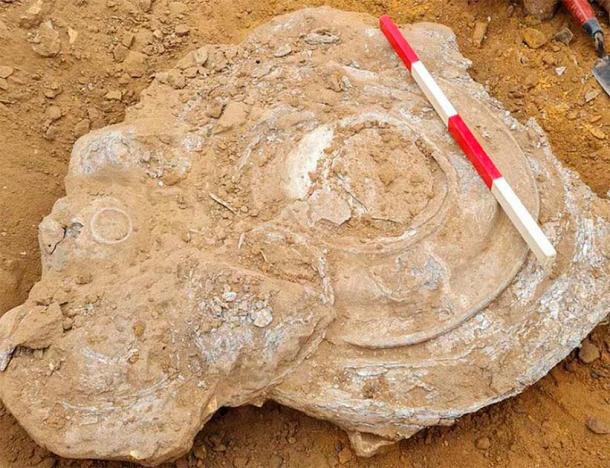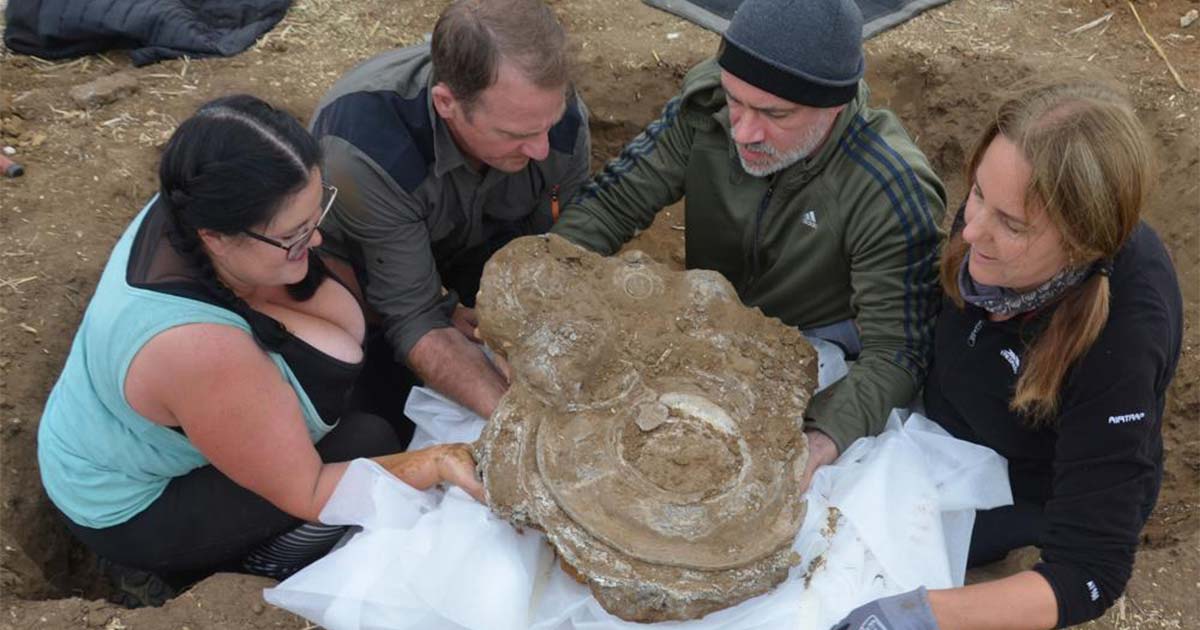Metal Detecting Event Uncovers Significant Roman Hoard in UK
A ‘significant hoard’ of Roman items discovered in England last year by an amateur detectorist has gone on display, much to the delight of history enthusiasts and archaeologists involved in the dig. The discovery included a collection of pewter plates, platters, bowls, and a cup. The manner in which these vessels were buried strongly indicates that they were deliberately placed, possibly for the purpose of safekeeping or as an offering, according to experts.
Starting from now until January 2024, these remarkable artifacts can be enjoyed by the public at the West Stow Anglo-Saxon village, located near Bury St Edmunds in the form of a temporary exhibition, according to a press release by the Suffolk City Council . This hoard has been traced to the late Roman period in Britain, towards the end of the 4th century AD.
- Amateur Treasure Hunter Will Make Thousands of Dollars from a Medieval Gold Ring
- The Hoxne Hoard: How a Mislaid Hammer Led to the Largest Roman Treasure in Britain

Part of the hoard of Roman pewter found at Euston. (Suffolk County Council)
An Organized Metal Detecting Event, An Amateur To the Rescue
The uncovering of this hoard took place in September 2022 on the Duke of Grafton's Euston estate, in Suffolk, England. Martin White, who was participating in an organized metal detecting event, stumbled upon this remarkable treasure.
Mr White, who’d taken part in an East of England Rally, an organized detecting event, said:
“I’ve been detecting for about 10 years, and this is the most high profile find I’ve made so far, it was very exciting! We quickly consulted with the Archaeological Service so that the items could be removed and recorded, without being damaged. It was a privilege to be involved in the whole process, from discovery to excavation to seeing the finds go on display.”
Following the discovery, the Suffolk County Council Archaeological Service took charge of coordinating the excavation process, while the Norfolk Museum Service was entrusted with the responsibility of conserving these precious artifacts, reports The BBC.
Examining the Vessels: Plow Damage and the Late Roman Period
The vessels have endured heavy plow damage and advanced corrosion has fused several of them together, reports Arkeonews. The main stack contained five plates and platters nested on top of each other.
- Security: The Long History of the Lock and Key
- 2,000-Year-Old Bloomberg Tablets Reveal London Life Under the Romans

The main stack of pewter plates fused together due to corrosion. (Norfolk Museum Service)
Faye Minter, Suffolk County Council’s Archaeological Archives and Projects Manager commented:
“This is a significant discovery. The larger plates and platters were used to allow food to be served communally and the octagonal bowls may have a Christian reference. Similar hoards are found across southern Britain, including from the nearby large Roman settlements at Icklingham and Hockwold.”
It is worth noting that during the late Roman period, which is the era to which the vessels have been traced, Britain was a part of the vast Roman Empire, as aforementioned. This period extends from the momentous invasion led by Emperor Claudius in AD 43 until the early 5th century.
Councilor Melanie Vigo di Gallidoro, Suffolk County Council’s Deputy Cabinet Member for Protected Landscapes and Archaeology, said:
“It is amazing to think that this fragile hoard has survived thousands of years, and being discovered by Martin, that adds to the Suffolk story. This is a fantastic example of teamwork, with many organizations coming together to help preserve Suffolk’s history, all made possible by the generous support of the Euston Estate, East of England Rallies and, of course, Martin.”
It is interesting to observe that, due to the hoard's Roman origins and composition of pewter, it does not meet the criteria for classification as "Treasure" under the 1996 Treasure Act. Nonetheless, the historical and archaeological value of these artifacts remains undeniable.
Councilor Ian Shipp, also the Cabinet Member for Leisure and Culture at West Suffolk Council, provides concluding words of wisdom. He explained that it provides an entryway for the local people to also participate in the history and culture of their region, along with adding a new historical strand to the Roman story of colonization in this part of the world. This was a critical juncture before the settlement at West Stow was beginning.
Top image: Roman hoard of pewter items from the Euston find site in Suffolk. Source: Suffolk County Council
By Sahir Pandey
References
Hurst, K. 2023. 2,000-year-old Roman hoard found by Barningham detectorist in Euston goes on display at West Stow Anglo Saxon Village and Museum. Available at: https://www.suffolknews.co.uk/bury-st-edmunds/news/2-000-year-old-roman-hoard-discovered-on-suffolk-estate-goes-9319286/.
Kayra, O. 2023. 2,000-year-old Roman pewter hoard discovered in Suffolk. Available at: https://arkeonews.net/2000-year-old-roman-pewter-hoard-discovered-in-suffolk/.
Lewis, K. 2023. Suffolk Roman hoard found on Euston estate goes on display. Available at: https://www.bbc.com/news/uk-england-suffolk-66052543.
Milligan, M. 2023. ARCHAEOLOGISTS UNCOVER ROMAN HOARD IN SUFFOLK. Available at: https://www.heritagedaily.com/2023/07/archaeologists-uncover-roman-hoard-in-suffolk/147942.

















